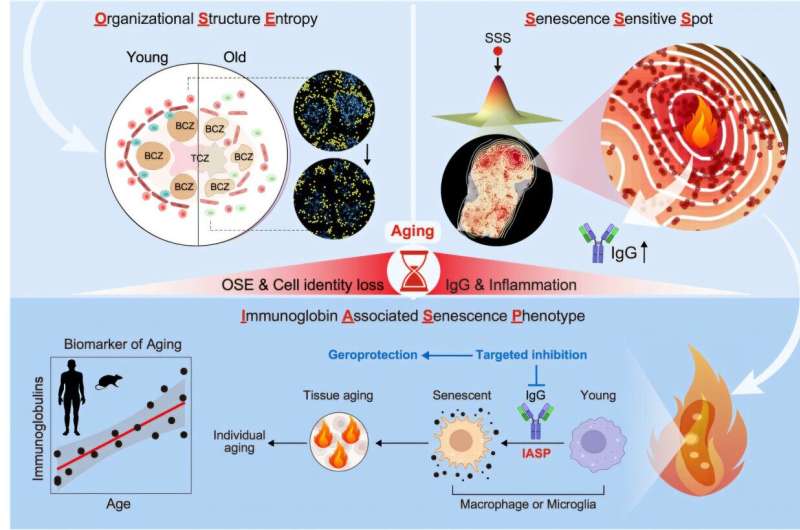CAS and BGI Researchers Unveil Aging Mechanisms Linked to Immunoglobulins

Beijing, China - In a groundbreaking study published in the journal Cell on November 4, 2024, scientists from the Chinese Academy of Sciences (CAS) and BGI Research have made significant strides in understanding the aging process, particularly the role of immunoglobulins. This collaborative research, involving experts from various institutes under CAS and BGI Research, provides a new perspective on how aging affects multiple organs and could potentially lead to novel anti-aging interventions.
The study, titled "Spatial Transcriptomic Landscape Unveils Immunoglobulin-Associated Senescence as a Hallmark of Aging," detailed the creation of high-precision spatial transcriptomic maps by analyzing millions of spatial spots across nine organs in male mice. These maps, referred to as Gerontological Geography (GG), have revealed common aging signs such as tissue structural disorder and loss of cellular identity.
Professor Liu Guanghui from the Institute of Zoology, CAS, highlighted the significance of the findings: "This landscape is a significant step forward, pinpointing the epicenters of aging within multiple organs and uncovering the accumulation of immunoglobulins as a key aging characteristic and driver."
The research identified specific regions within organs, termed Senescence-Sensitive Spots (SSS), which are more prone to the effects of aging. These spots showed higher tissue structural entropy and a significant loss of cellular identity, suggesting that SSS could be central to organ aging.
A crucial discovery was the role of immunoglobulin G (IgG), which was found to accumulate in aging tissues across both humans and mice. The study demonstrated that IgG directly induces aging in macrophages and microglia by releasing inflammatory factors. In a notable experiment, injecting IgG into young mice accelerated aging in multiple organs, confirming its impact.
Furthering their research, the team developed an intervention using antisense oligonucleotides (ASO) to reduce IgG levels in mice, which successfully delayed aging in various organs.
"This study is the first to map the spatial transcriptome of pan-organ aging in mammals, revealing not just the hallmarks but also the core regions where aging is most pronounced," added Professor Gu Ying from BGI Research.
The implications of this research are vast, proposing the Immunoglobulin-associated Senescence Phenotype (IASP) as a new framework for understanding aging. It opens up avenues for delaying aging and preventing age-related diseases through targeted therapies.
The findings are published in Cell, with the DOI: 10.1016/j.cell.2024.10.019, and are expected to inspire further research into aging biomarkers and therapeutic strategies.
About Alayaran.com: Alayaran.com is dedicated to delivering the latest in science, technology, and health news, ensuring our readers stay informed about significant scientific advancements and their implications for society.
